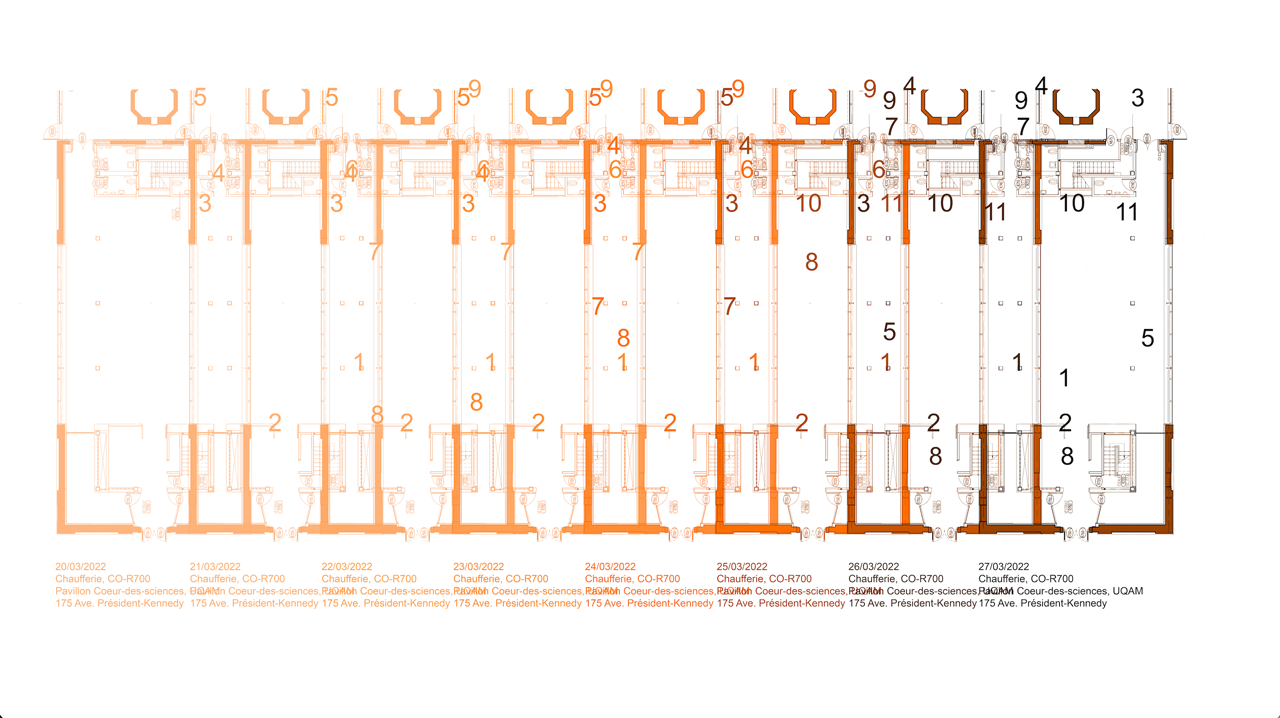IWantmyStuffBack presents itself for Caron as an opportunity to reflect on the different economies that simultaneously run through the storage unit and the artistic practice that emerges from it: the economy of debt (Lazzarato, 2011), the affective economy (Massumi, 2018), and most importantly, the economy of means and the politics of making do with (Brunette and Lemieux, 2021).
In the exhibition, Caron integrated these three visions of transindividual economies (Massumi, 2018), which are fluid, speculative, and highly mobile, with the aforementioned performative protocol. The latter, developed in the various studio units, consisted of (re)producing simplified versions of my first studio and then using the components of these studios in sculptural compositions. The rooms of the Chaufferie were occupied as workshops, in a similar functional relationship
During the exhibition, changes in the arrangement of the elements present were documented by a pamphlet available on site. This pamphlet, reprinted daily according to the movements of the objects contained in the installation, makes it possible to trace the different configurations of the space of the Chaufferie as it was experienced by visitors during the exhibition. It also documents, conversely, the evolution of his own relationship to the rooms of the Chaufferie and the objects it contained.

